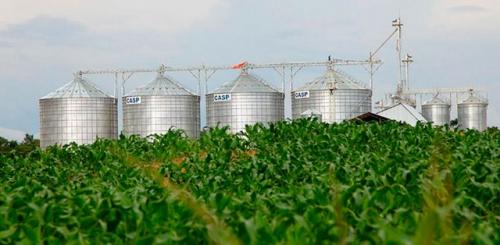The Argentine pendulum
Everything indicates that the pendulum is returning in 2019 to the side of the industrialists, after a failed pro-export market government.
- Opinión

For over a century, Argentina has been swinging between the power of the ranchers who export meat and wheat and the industrialists. This has led to an almost permanent oscillation between export-led growth policies and industrialization policies. More recently, they have had a boom in primary exports derived from China's investments in mining and energy. While this has served to cover external deficits, it is a deviation from the raison d'être of the country where the idea is that without industry there is no Argentina.1
Meanwhile, with more than 80% of foreign trade concentrated in Britain, when it lost dynamism in the 1950s, Argentina suffered the same fate. The decline of the one brought with it the decline of the other due to the structure of the external market and the nature of trade. As recently as 1960, ECLAC considered Argentina to be an exporter of manufactures along with Brazil, distinct from the primary exporting countries of the rest of South America. Since then, the aeronautical, automotive and computer industries have been dismantled, and the nuclear medicine industry is now in question.
The political expressions of the financial sector are the PRO and the Peronist right. This new elite detached from the land, has fought since the 1980s to take control of the economy, always with the same bad fate. With a pro-free market technocracy, it has not been able to consolidate its power despite the unrestricted support of the United States, the IMF, the economic press and international financial capital, ending up with exchange rate crises: 2001 and 2019.
Figure 1 Argentina: GDP, GKF and Manufacturing growth 2000-2018
It is possibly because of this foreign exchange crisis and the debt problems that regularly afflict the country, that Axel Kiciloff, former Minister of Economy of the government of Cristina Kirchner, embarked on a tour of the United States to calm the spirits of the financial markets. The truth is that for the neo-conservative hawks of the State Department, Kiciloff is a bete noire. For the international economic press he is a rebel, and Cristina was the main fighter against the vulture funds and in particular with the Elliot fund. Elliot is a significant contributor of resources to congressional lobbies for changes in financial laws, including the Champerty that existed and that would have prevented Elliot's agreement with Macri's government in 2015.
The essence of the problem is that Argentina, as well as the United States, Mexico and Brazil, grow because of the dynamics of the internal market and not due to exports. The onslaught against real wages by exporters has tumbled the domestic market. When this is accompanied by unrestricted market openings, it is normal for the rate of private investment to fall alongside the drop in manufacturing activity. (See graph). All of this precedes the fall in GDP growth by one semester. Balance of payments bottlenecks normally accompany these crises due to overvalued exchange rates and capital outflows.
Source: www.obela.org updated with CEPALSTATS
Everything indicates that the pendulum is returning in 2019 to the side of the industrialists, after a failed pro-export market government. A new pro state industrialist government will make the investment rate increase, wages improve and with that a reactivation will occur. This is what Kiciloff talked about at the Wilson Center on May 10. The external restriction will be maintained, but it will force them to export more. The danger is that the close relationship with China could end up defeating its industrial productive purpose.
According to "Inversiones de la República Popular China en Argentina", made by Julio Calzada and Franco Ramseyer, analysts at the Rosario Stock Exchange, China's largest investments are in the Belgrano and the San Martín Cargas Railways, and also in the "B Road Corridor of the Public-Private Participation Program". They also develop projects for wind farms, solar energy, nuclear power plants and hydroelectric dams. This generates tension because, although manufacturing exports represent the bulk of the national total historically, raw materials still represent 30% of their exports. The problem is that while the automotive sector represents 40% of trade with Brazil, the main trading partner; trade with China, the second partner, is centered 83% on food, and crude oil, according to MIT's Observatory for Economic Complexity. The triumph of Kirchnerism will be the triumph of the interventionists, but may not necessarily be the triumph of the industrialists, seeing China's new role in its economy. Faced with the failure of the market and external restrictions, Argentines will have to choose with whom and where they want to go.
Meanwhile, Cristina faces 10 lawsuits brought by a judge who has recently undergone brain cancer surgery. The Supreme Court will begin judicial proceedings on May 21 and will see whether or not she can be a candidate.
Ciudad Universitaria, 16.5.19
Oscar Ugarteche, Instituto de Investigaciones Económicas UNAM, SNI/CONACYT, Coordinador del Observatorio Económico de América latina, www.obela.org
1 Marcelo Rougier, Argentina será industrial o no cumplirá sus destinos, Imago Mundi, Buenos Aires, 2018
Del mismo autor
- El multilateralismo bipolar 08/03/2022
- Bipolar multilateralism 07/03/2022
- What does 2022 bring? Uncertainty 31/01/2022
- ¿Qué trae el 2022? Incertidumbre 31/01/2022
- The most expensive Christmas of the century... (so far) 20/01/2022
- La navidad más cara del siglo (hasta ahora) 20/01/2022
- Lo que pasó en el 2021 10/01/2022
- What happened in 2021 10/01/2022
- Estados Unidos: el elefante en la habitación 08/11/2021
- The elephant in the room 07/11/2021
Clasificado en
Clasificado en:
Crisis Económica
- Geraldina Colotti 07/04/2022
- Julio C. Gambina 07/04/2022
- Rafael Bautista S. 06/04/2022
- Julio Gambina 04/04/2022
- José Ramón Cabañas Rodríguez 01/04/2022
